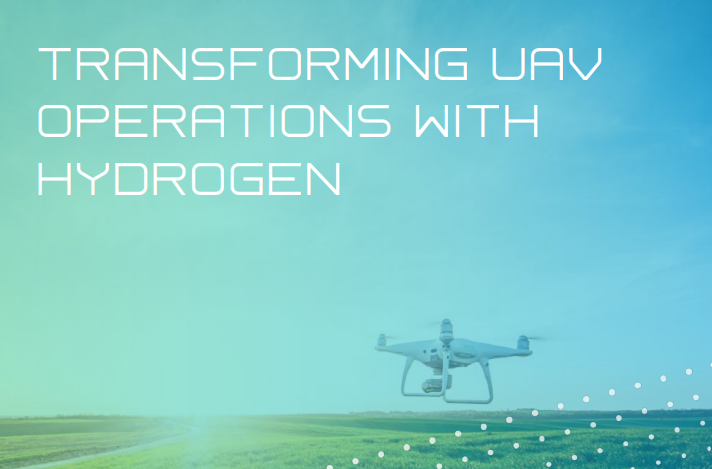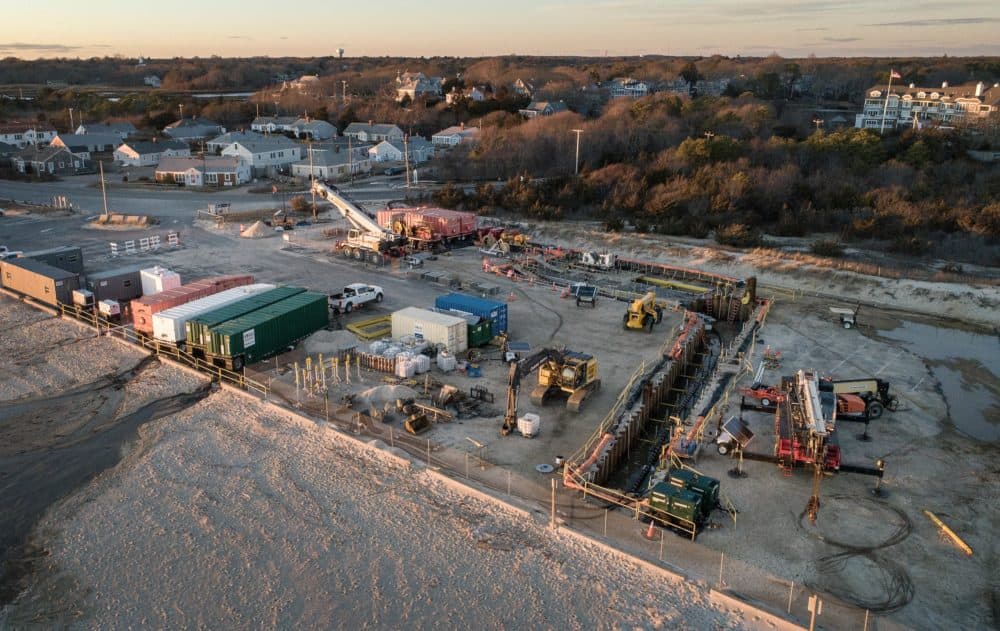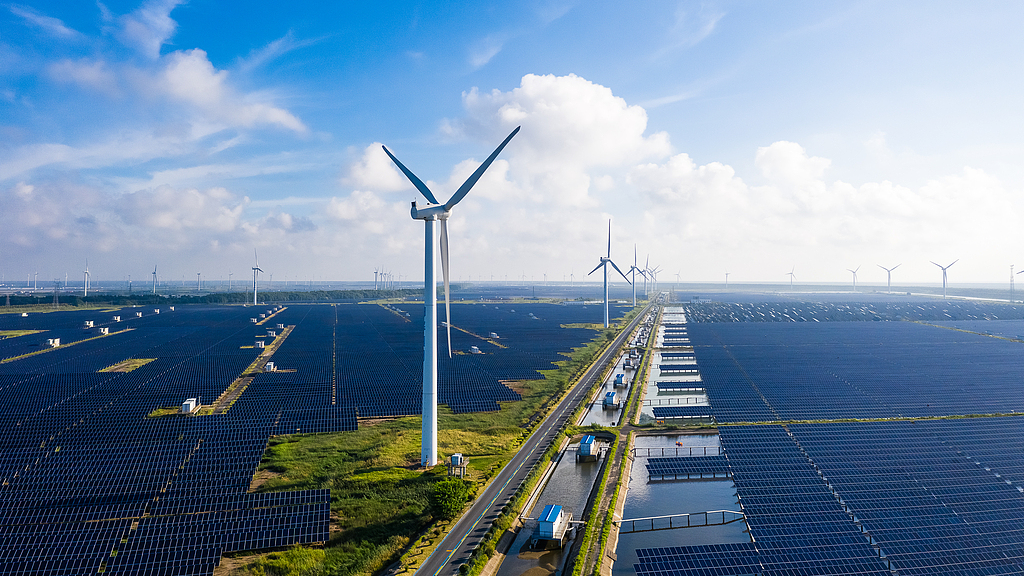Report on Hydrogen-Powered UAVs and Their Contribution to Sustainable Development Goals
Introduction: Current UAV Limitations and the Need for Sustainable Innovation
The Unmanned Aerial Vehicle (UAV) industry has demonstrated significant utility across various sectors, including public safety, medical logistics, and infrastructure maintenance. However, the operational efficacy of current UAV technology is constrained by the limited endurance of lithium batteries, which typically provide only 15-45 minutes of flight time. This limitation presents a substantial barrier to realizing the full potential of UAVs in contributing to global development objectives.
Hydrogen Fuel Cells: A Catalyst for Clean Energy and Resilient Infrastructure (SDG 7 & SDG 9)
A recent report from H2MOF, titled Transforming UAV Operations with Hydrogen, identifies hydrogen fuel cell technology as a viable solution to extend UAV operational endurance to several hours. This technological shift aligns directly with Sustainable Development Goal 7 (Affordable and Clean Energy) by promoting a clean power source with minimal environmental impact. The development and application of this technology also represent a significant advancement in Industry, Innovation, and Infrastructure (SDG 9), enabling more complex and long-duration missions, such as comprehensive inspections of critical infrastructure like bridges, which is vital for building resilient communities.
Addressing Hydrogen Storage Challenges through Advanced Materials (SDG 9)
Widespread adoption of hydrogen power in the UAV sector has been historically hindered by challenges associated with traditional hydrogen storage methods, such as compressed gas and liquid hydrogen. These methods present inefficiencies, safety risks, and logistical burdens. The H2MOF report details an innovative solution to these barriers:
- Solid-State Hydrogen Storage: H2MOF has developed a solid-state storage system utilizing nano-engineered reticular materials.
- Enhanced Safety and Efficiency: This technology enables hydrogen storage at low pressure and near-ambient temperatures, mitigating the risks of traditional methods and overcoming a critical barrier to adoption. This innovation is a key contributor to SDG 9 by fostering sustainable and resilient industrial technology.
Key Advantages and Alignment with Global Sustainability Targets
The implementation of solid-state hydrogen fuel cell systems in UAVs offers multiple advantages that directly support a range of Sustainable Development Goals:
- Low Environmental Impact: As a zero-emission power source, hydrogen fuel directly supports Climate Action (SDG 13) and contributes to the broader goal of Affordable and Clean Energy (SDG 7).
- Longer Flight Time: Extended operational endurance enhances the effectiveness of UAVs in critical missions, such as delivering life-saving medical supplies to remote areas, which supports Good Health and Well-being (SDG 3), and conducting prolonged surveillance for public safety, contributing to Sustainable Cities and Communities (SDG 11).
- Increased Payload Capacity: The high energy density of hydrogen allows for heavier payloads, enabling the transport of more substantial medical cargo or advanced sensor equipment for infrastructure analysis, thereby advancing objectives within SDG 3 and SDG 9.
- Rapid Refueling: The ability to refuel quickly minimizes downtime and increases operational tempo, a crucial factor for emergency response and disaster relief efforts that are central to SDG 11.
- Improved Total Cost of Ownership: Enhanced efficiency and durability contribute to more sustainable economic models for critical UAV operations.
Conclusion: A Pathway to Decarbonized and Enhanced Aerial Operations
The transition to hydrogen power, facilitated by innovative solid-state storage solutions, positions the UAV industry to significantly enhance its contributions to the Sustainable Development Goals. By overcoming the primary limitation of flight endurance with a clean energy source, hydrogen-powered UAVs can more effectively support global efforts in healthcare, climate action, and the development of safe, resilient, and sustainable infrastructure.
Analysis of Sustainable Development Goals (SDGs) in the Article
1. Which SDGs are addressed or connected to the issues highlighted in the article?
- SDG 3: Good Health and Well-being – Connected through the application of drones for delivering medical supplies.
- SDG 7: Affordable and Clean Energy – Addressed by the development of hydrogen as a clean alternative fuel source to traditional batteries.
- SDG 9: Industry, Innovation, and Infrastructure – Directly addressed through the focus on technological innovation, scientific research, and upgrading infrastructure (drones) with clean technology.
- SDG 11: Sustainable Cities and Communities – Connected through the use of drones for inspecting infrastructure like bridges, which is essential for community safety and resilience.
- SDG 13: Climate Action – Addressed by promoting a technology with a “low environmental impact” and a mission to “decarbonize the energy system.”
2. What specific targets under those SDGs can be identified based on the article’s content?
-
SDG 7: Affordable and Clean Energy
- Target 7.2: By 2030, increase substantially the share of renewable energy in the global energy mix. The article promotes hydrogen fuel cells as a cleaner power source than lithium batteries, contributing to a shift towards cleaner energy solutions in the UAV industry. The company’s mission is to “decarbonize the energy system.”
- Target 7.3: By 2030, double the global rate of improvement in energy efficiency. The article highlights that hydrogen fuel cells offer “high energy density” and “hours of flight time” compared to the “15-45 minutes a lithium battery typically provides,” representing a significant improvement in energy efficiency for drone operations.
-
SDG 9: Industry, Innovation, and Infrastructure
- Target 9.4: By 2030, upgrade infrastructure and retrofit industries to make them sustainable, with increased resource-use efficiency and greater adoption of clean and environmentally sound technologies. The article focuses on adopting hydrogen fuel cells, a “clean and environmentally sound technology” with “reduced environmental impact,” to upgrade the drone industry.
- Target 9.5: Enhance scientific research, upgrade the technological capabilities of industrial sectors… encouraging innovation. The article profiles H2MOF, a company founded by Nobel Laureates, which is “deploying the latest discoveries and inventions” and developing “transformative hydrogen storage solutions,” directly embodying the spirit of this target.
-
SDG 13: Climate Action
- Target 13.3: Improve education, awareness-raising and human and institutional capacity on climate change mitigation, adaptation, impact reduction and early warning. The 37-page report, “Transforming UAV Operations with Hydrogen,” is explicitly designed to “equip your team with the knowledge to move forward,” serving as an educational tool to raise awareness and build capacity for adopting a climate-friendly technology.
-
SDG 3: Good Health and Well-being
- Target 3.d: Strengthen the capacity of all countries… for early warning, risk reduction and management of national and global health risks. The article mentions that drones can “deliver life-saving medical supplies.” By enabling “longer flight times” and “heavier payloads,” the hydrogen technology enhances the capacity of drones to manage health risks by improving the reach and efficiency of medical deliveries.
3. Are there any indicators mentioned or implied in the article that can be used to measure progress towards the identified targets?
-
For Target 7.3 (Energy Efficiency):
- Indicator: Flight duration of drones. The article provides a direct quantitative comparison: “hours of flight time” for hydrogen fuel cells versus “15-45 minutes” for lithium batteries. This serves as a clear metric for improved energy efficiency.
- Indicator: Energy density of power source. The article explicitly mentions “high energy density” as a key benefit of hydrogen fuel cells, which can be measured and compared to traditional batteries.
-
For Target 9.4 (Adoption of Clean Technologies):
- Indicator: Adoption rate of hydrogen fuel cell technology in the UAV industry. The article implies this by stating the report is beneficial to “drone manufacturers, operators” and aims to enable a “wider adoption of hydrogen.” Tracking this adoption would measure progress.
-
For Target 9.5 (Research and Innovation):
- Indicator: Investment in research and development for clean energy storage. The existence of H2MOF, its mission, and its development of “solid-state hydrogen storage solutions” based on research by Nobel Laureates are qualitative indicators of ongoing R&D efforts.
-
For Target 3.d (Capacity for Health Risk Management):
- Indicator: Payload capacity and range of medical delivery drones. The article states that hydrogen technology allows for “heavier payloads” and “longer flight times,” which are measurable improvements that directly enhance the capacity for delivering medical supplies.
4. Table of SDGs, Targets, and Indicators
| SDGs | Targets | Indicators |
|---|---|---|
| SDG 7: Affordable and Clean Energy | 7.2: Increase the share of renewable energy. 7.3: Double the rate of improvement in energy efficiency. |
– Adoption rate of hydrogen fuel cells in the UAV industry. – Flight duration (hours vs. 15-45 minutes). – Energy density of the power source. |
| SDG 9: Industry, Innovation, and Infrastructure | 9.4: Upgrade infrastructure and industries with clean and environmentally sound technologies. 9.5: Enhance scientific research and upgrade technological capabilities. |
– Number of drone manufacturers and operators using solid-state hydrogen systems. – Investment in R&D for clean hydrogen storage solutions. |
| SDG 13: Climate Action | 13.3: Improve education and awareness-raising on climate change mitigation. | – Dissemination and impact of educational materials like the “Transforming UAV Operations with Hydrogen” report. |
| SDG 3: Good Health and Well-being | 3.d: Strengthen capacity for management of national and global health risks. | – Increase in payload capacity for medical supplies. – Increase in flight range for medical delivery drones. |
Source: commercialuavnews.com






